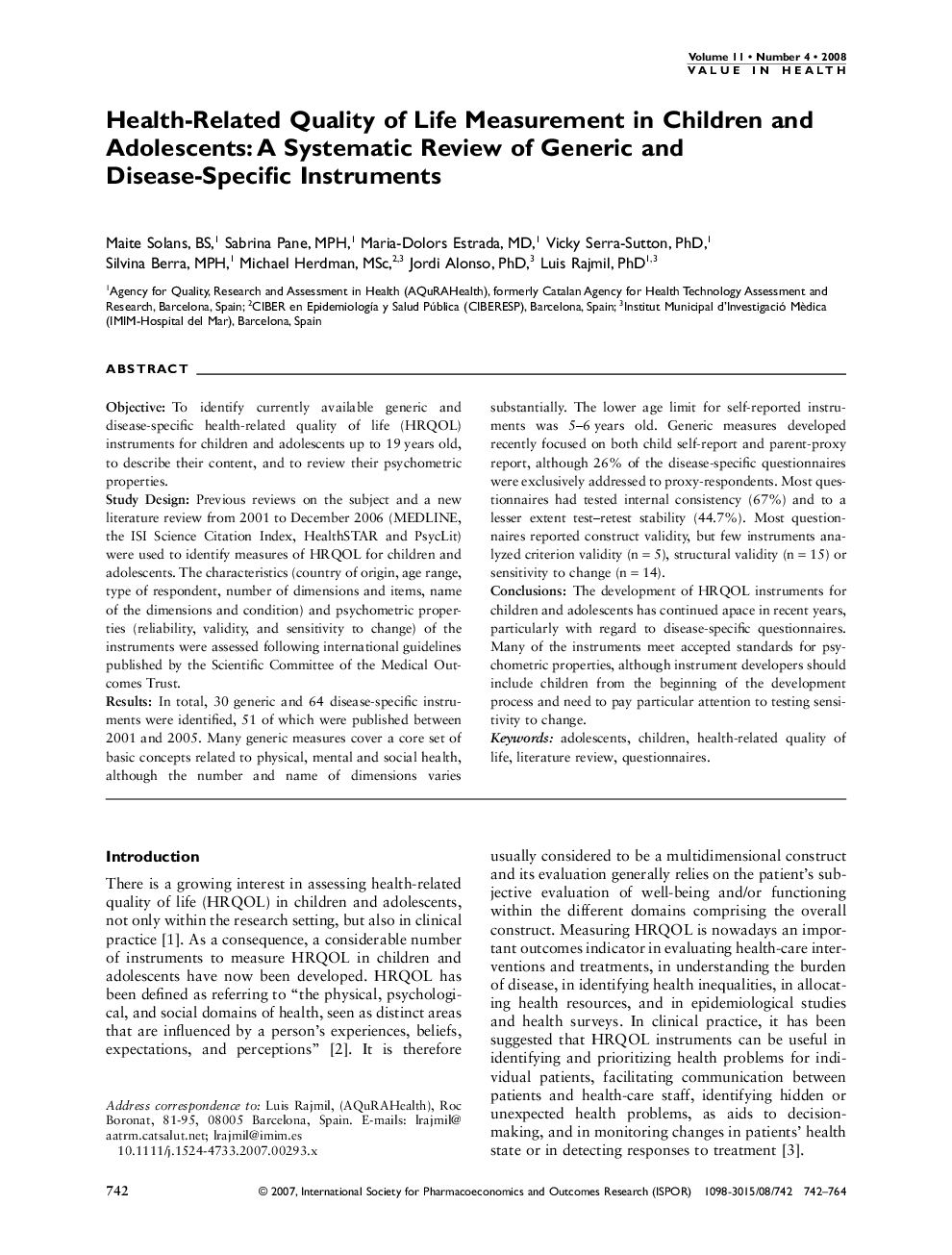| کد مقاله | کد نشریه | سال انتشار | مقاله انگلیسی | نسخه تمام متن |
|---|---|---|---|---|
| 988903 | 935374 | 2008 | 23 صفحه PDF | دانلود رایگان |

ObjectiveTo identify currently available generic and disease-specific health-related quality of life (HRQOL) instruments for children and adolescents up to 19 years old, to describe their content, and to review their psychometric properties.Study DesignPrevious reviews on the subject and a new literature review from 2001 to December 2006 (MEDLINE, the ISI Science Citation Index, HealthSTAR and PsycLit) were used to identify measures of HRQOL for children and adolescents. The characteristics (country of origin, age range, type of respondent, number of dimensions and items, name of the dimensions and condition) and psychometric properties (reliability, validity, and sensitivity to change) of the instruments were assessed following international guidelines published by the Scientific Committee of the Medical Outcomes Trust.ResultsIn total, 30 generic and 64 disease-specific instruments were identified, 51 of which were published between 2001 and 2005. Many generic measures cover a core set of basic concepts related to physical, mental and social health, although the number and name of dimensions varies substantially. The lower age limit for self-reported instruments was 5–6 years old. Generic measures developed recently focused on both child self-report and parent-proxy report, although 26% of the disease-specific questionnaires were exclusively addressed to proxy-respondents. Most questionnaires had tested internal consistency (67%) and to a lesser extent test–retest stability (44.7%). Most questionnaires reported construct validity, but few instruments analyzed criterion validity (n = 5), structural validity (n = 15) or sensitivity to change (n = 14).ConclusionsThe development of HRQOL instruments for children and adolescents has continued apace in recent years, particularly with regard to disease-specific questionnaires. Many of the instruments meet accepted standards for psychometric properties, although instrument developers should include children from the beginning of the development process and need to pay particular attention to testing sensitivity to change.
Journal: Value in Health - Volume 11, Issue 4, July–August 2008, Pages 742-764